
Thinhorn Mountain Sheep
Thinhorn Mountain Sheep grow one set of horns from youth to old age. Pictured are two rams (males). L to R: Young ram; mature ram.
Further, evolutionary biologists1https://www.ualberta.ca/science/news/2016/june/dna-analysis-rewrites-the-story-of-thinhorn-sheep-during-the-last-ice-age.html studying the lineages of thinhorn sheep have found evidence suggesting that the species diverged hundreds of thousands of years earlier than previously thought. Greatly influenced by the formation, movement and final melting of the glaciers, thinhorn sheep roamed a vast area in search of ice-free grazing areas known as refugia. The mountainous geography often separated groups of similar or same subspecies sheep where through isolation they accumulated some variances between populations over time, sometimes resulting in the formation of what were originally thought to be new subspecies due to variations of their physical appearance.
Genetic science continues to study these animals and new proofs are foreseen to reveal how the present thinhorn sheep populations of the Yukon, BC and Alaska evolved to be what they are today. As genetic scientists work with data gathered by paleontologists, geologists and other scientific disciplines, there is anticipated to be a more accurate understanding of how northern animals evolved into what they are today.
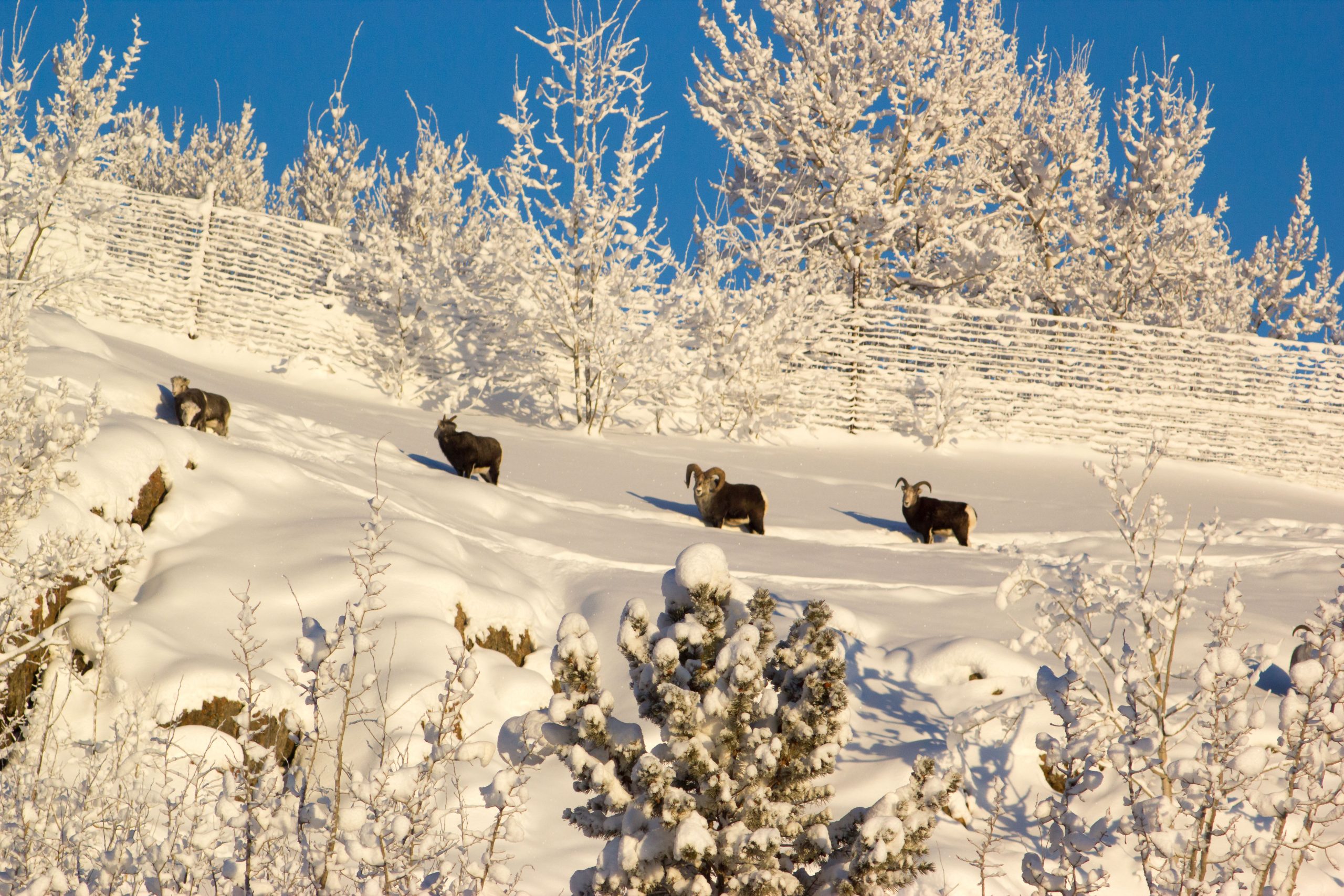
Female sheep or ewes also grow horns but these are much more diminutive than the male sheeps’ horns.
The first few inches of horn that a ram grows is called a lamb tip and represents about the first 6 months of the animal’s life,4https://www.adfg.alaska.gov/static/hunting/dallsheephunting/pdfs/dall_sheep_guide_to_judging_sheep_horns_under_full_curl_regulation.pdf it often gets broken off as the ram’s life of fighting and careless use take their toll.
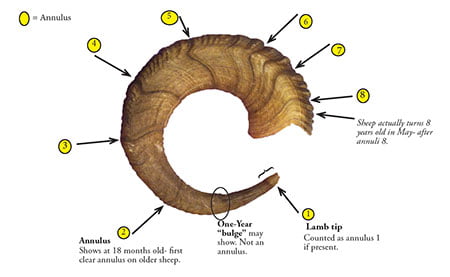
Hunting organizations such as Boone & Crockett have devised an elaborate measuring system with which to score the horns of most big game animals. The horns are measured at specific locations including the base, the overall length of the horn on each side, the distance between the horn tips and diameters of the horn in four key places. Once these measurements are collected some math is performed to arrive at the score for that ram’s horns. Records are kept by species so that hunters know how their harvested ram compares to others. This record keeping is also valuable for biologists and others to track the various changes in sheep populations around the world and may indicate declines in health, and their supporting environment and other influences which may be indicated by the changing size or condition of their horns.
Regional governments also utilize hunters to gather important data from the field. This is usually done by making it mandatory that certain parts of the harvested animal are submitted to the Game Branch as a condition of the species harvest tag. In this way biologists get to examine a diversity of a certain species all harvested within a quantified period of time and noted locations. Biologists examining sheep submissions here in the Yukon check for a number of important indicators. Yukon regulations require the complete head of a harvested ram be submitted for inspection.6https://yukon.ca/sites/yukon.ca/files/env/env-yukon-hunting-regulations-summary_en.pdf]]
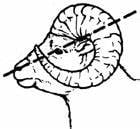 The first thing they examine is if the horns are indeed a full curl as regulations prohibit harvesting a ram that is less than a full curl.
The first thing they examine is if the horns are indeed a full curl as regulations prohibit harvesting a ram that is less than a full curl.
The biologists then extract a tooth to confirm the exact age of the animal by cutting the top off and counting the rings similar to the dendral or age rings of a tree. They may also take a tissue or blood sample to test for various diseases and infections the animals may suffer from. When all the tests have been completed the biologist bores a small hole in the top side of the horn facing the rear and epoxies a serialized aluminum plug into it. These plugs help to combat the underground trade of animal heads by having each head recorded by hunter, date and location.
Having access to all this data helps biologists to better understand the health of the wild sheep herds and may provide clues on where a disease is developing and which way it may be moving geographically.

Photo Credit: Kevin Pepper
Rams will often gently head-butt each other as a form of greeting, similar to how a house cat bumps your leg when seeking attention. They can be quite gentle in their horn touching activities or they will get up on their hind legs and really lean into butting another ram with all the force they can muster.

Photo Credit: Mark Newman
Young lambs are a popular target for migrating Golden Eagles. Ewes must be watching in all directions for potential dangers that could impact them or their offspring.
Mountain sheep have superior eyesight for distance and low-light conditions, they have horizontal pupils that help them to see panoramically to detect predators that could approach from different directions. They also need to be able to see forward clearly so that they can run over rough terrain. They have excellent peripheral vision and can see behind themselves without turning their heads due to where their eyes are located on their skulls. Remember they need to look around their horns too.
Thinhorn Mountain Sheep are remarkable creatures perfectly adapted to thrive on the mountains of Northwestern Canada and Alaska and will remain a featured megafauna species here at the Yukon Wildlife Preserve.
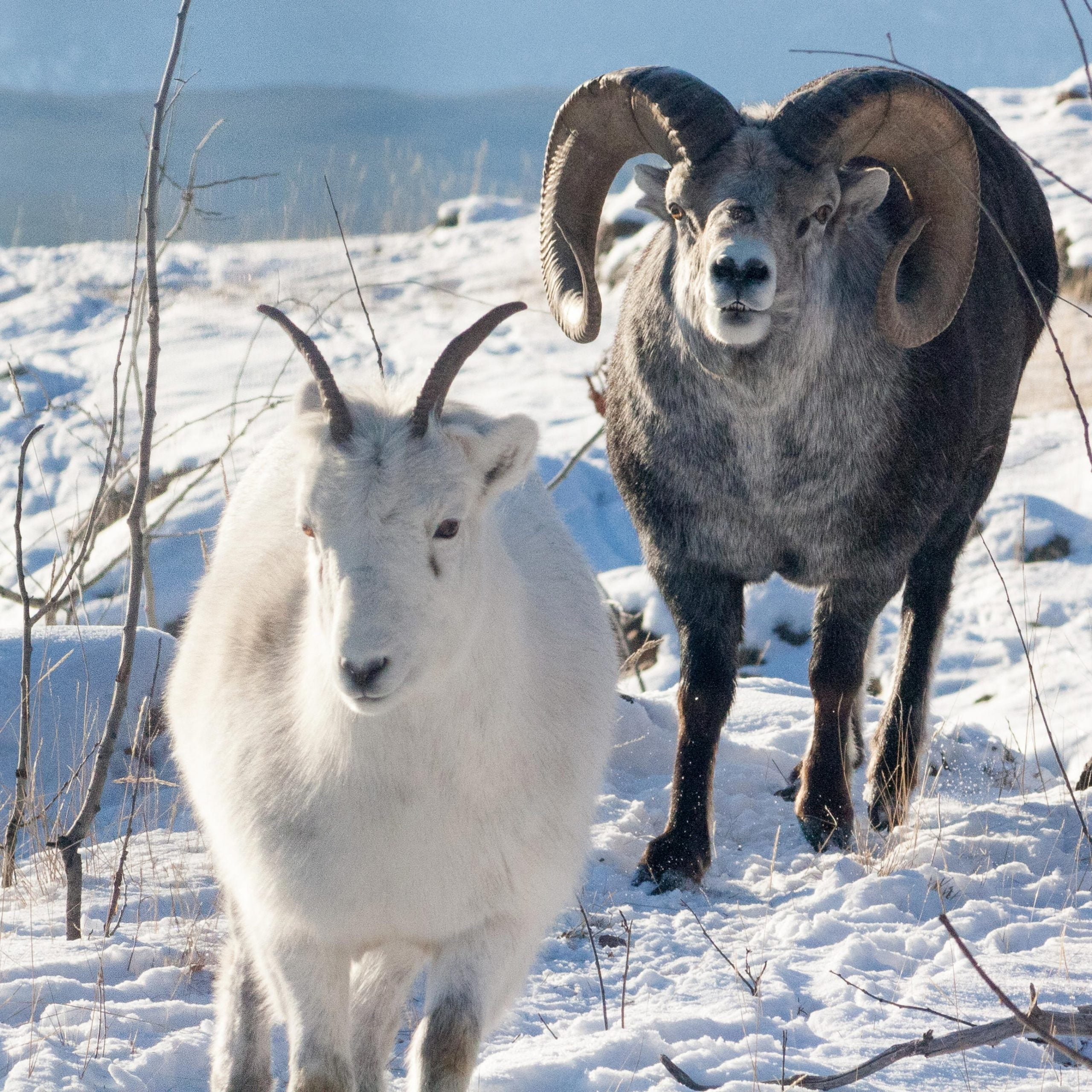
Ram follows an Ewe closely.
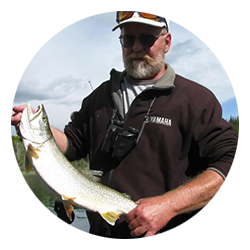
Doug Caldwell
Wildlife Interpreter
Doug is one of the Interpretive Wildlife Guides here at the Preserve. An avid angler and hunter he has a broad knowledge of Yukon’s wilderness and the creatures that live here. With a focus on the young visitors to the Preserve, Doug takes the extra time to help our guests to better appreciate the many wonders of the animal kingdom here in the Yukon.

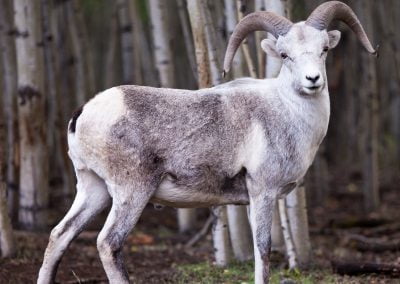
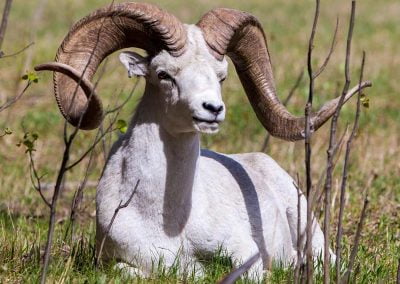
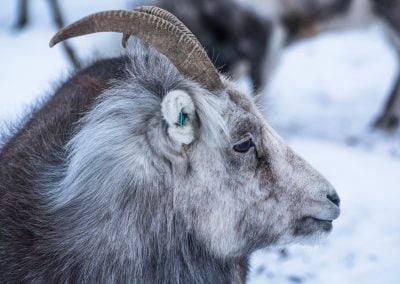
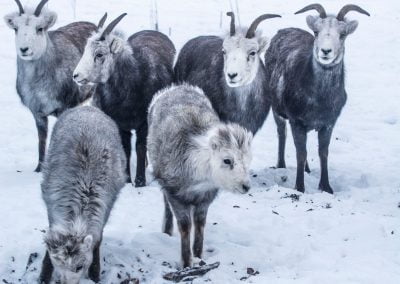
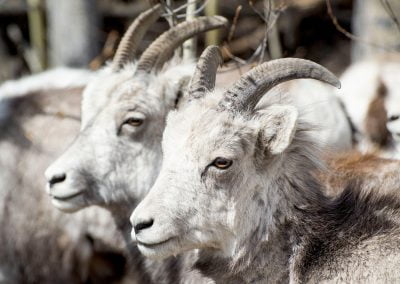
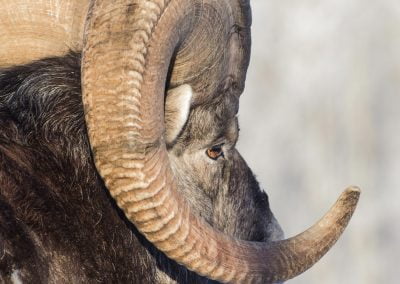
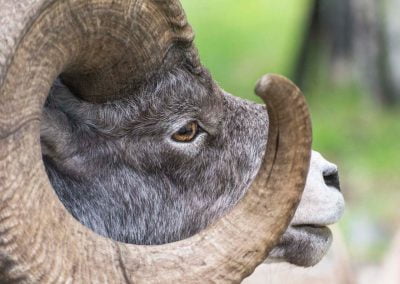
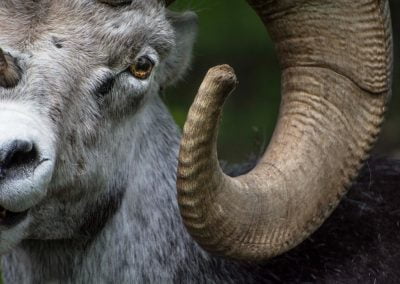
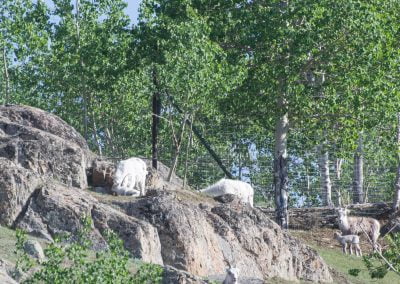
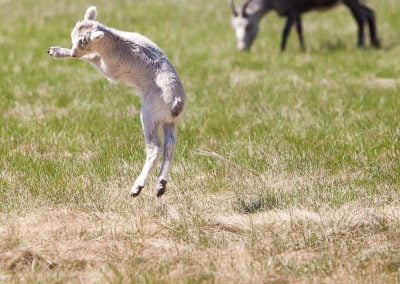
Excellent article, Doug. After decades of telling my tour guests about Dall, Fannin, and Stone sheep, it going to be tough to ditch those names.
Thanks for your kind words Murray. I find it remarkable how the various ‘ologists’ are working together in sharing their data so new theories can be pursued and old myths can be corrected. Be well!
Thank You for a great read…interesting and very informative.
Hi Terry, I’m glad you enjoyed it. I too am learning a great deal researching these articles. Please check our website blog for more articles on the animals here at the Preserve
Great article Doug, learned things I didn’t know. Thanks.
Thanks Bob, I am pleased that I could teach you some new things, I hope you can respond in kind and teach me how to find the really big nuggets. Be well bud!
Very interesting article and beautiful pictures. Thank you, Doug.
Thank you for your kind words Uli, it means so much more coming from you. Be well
Great article Doug, thanks.
Thanks for your endorsement Chris. Please check our website blog for more articles on the animals here at the Preserve. Be well!